Plans are for Várkapitányság to begin the reconstruction of the palace that stood at 1–2 Dísz Square in the second half of this year. The building was erected based on plans by Alajos Hauszmann and Dezső Hültl in 1902. The Ministry for Croatian-Slavonian-Dalmatian Affairs also operated in the palace built by the Hungarian Red Cross Society. From 1920 until World War II it served as the central offices of the Ministry of Foreign Affairs and was expanded according to the plans of Guido Hoepfner in 1923. The building suffered significant damage during the war, and while it could have been repaired, it was eventually demolished in 1946.
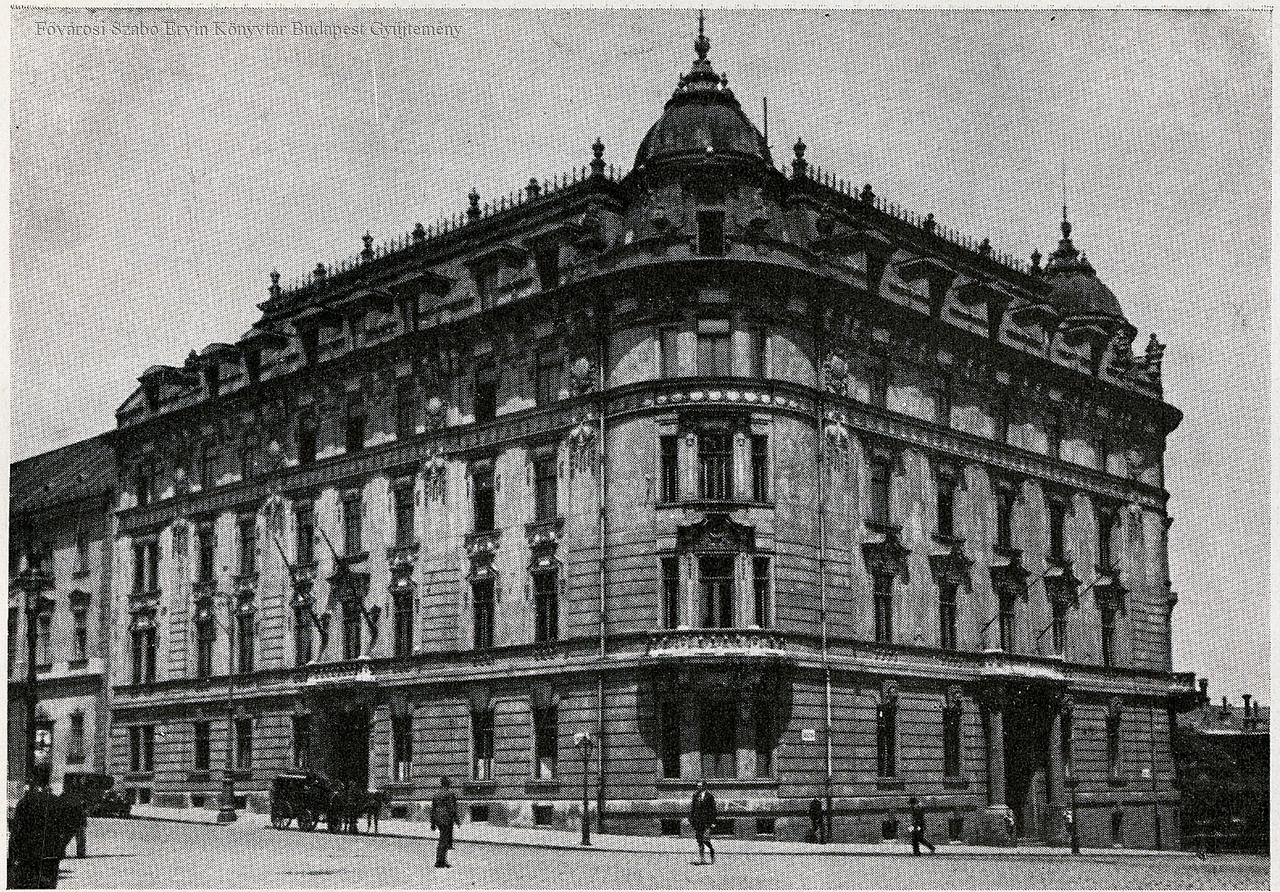
The building in 1935 as the central offices of the Ministry of Foreign Affairs (Photo: Fővárosi Szabó Ervin Könyvtár / Budapest Collection)
Reconstruction to honour the original plans by Hauszmann
The building will be reborn as part of the National Hauszmann Program. At the beginning of last year, during the excavation of the building’s cellars, archaeologists found the sculptures of Princes Álmos and Előd by Ferenc Mikula, which originally adorned the terrace under the main tower in the northern part of the Fisherman’s Bastion. Most of the archaeological excavations were completed last year. Work will continue with the excavation of a well from the Ottoman Era, which was found in the south-western part of the plot.
As Bence Bodrogi, a project manager at Várkapitányság told PestBuda, the most valuable historical spaces, of which photographic documentation has survived, will be reconstructed in their original form: the southern main entrance, the grand staircase and the ceremonial hall. The two memorial plaques unearthed during the excavations will also be restored to their intended locations. Plans also include the restoration of the glass mosaic of the Holy Crown that stood opposite the main entrance. The building's exterior façade will be rebuilt according to the original plans, but the roof and interior of the building will house modern technology.
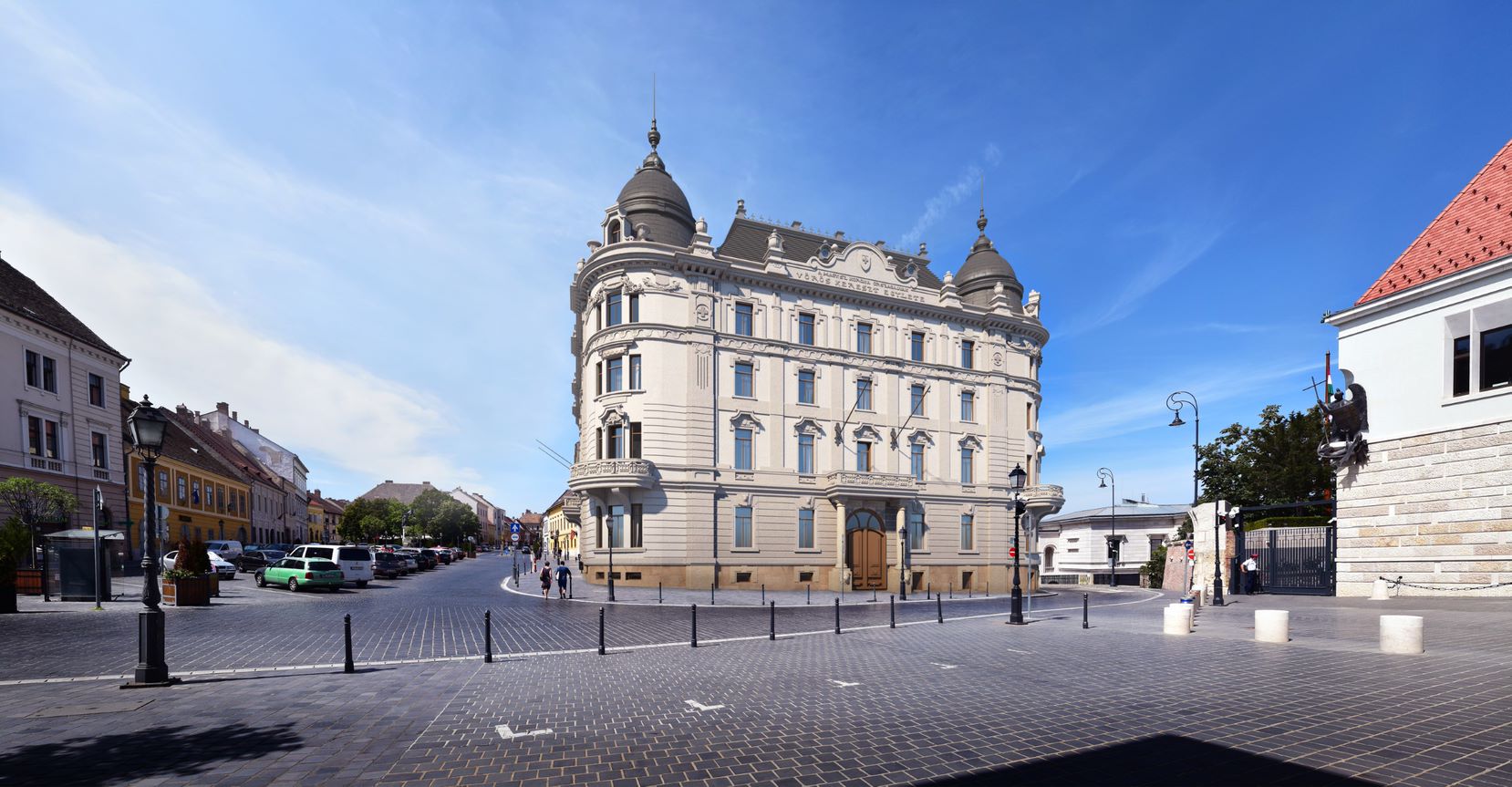
The facades of the palace are to be rebuilt according to the original plans (Visual: Várkapitányság)
The building's attic will be used in the future as well, but a modern solution will be used instead of the mansard windows chosen by Hoepfner. Adjustable steel slits that follow the line of the roof will let light into the attic rooms, while passers-by will see the solid roof that Hauszmann designed for the building. Bence Bodrogi added that the original ornaments of the facades and the roof would also be rebuilt.
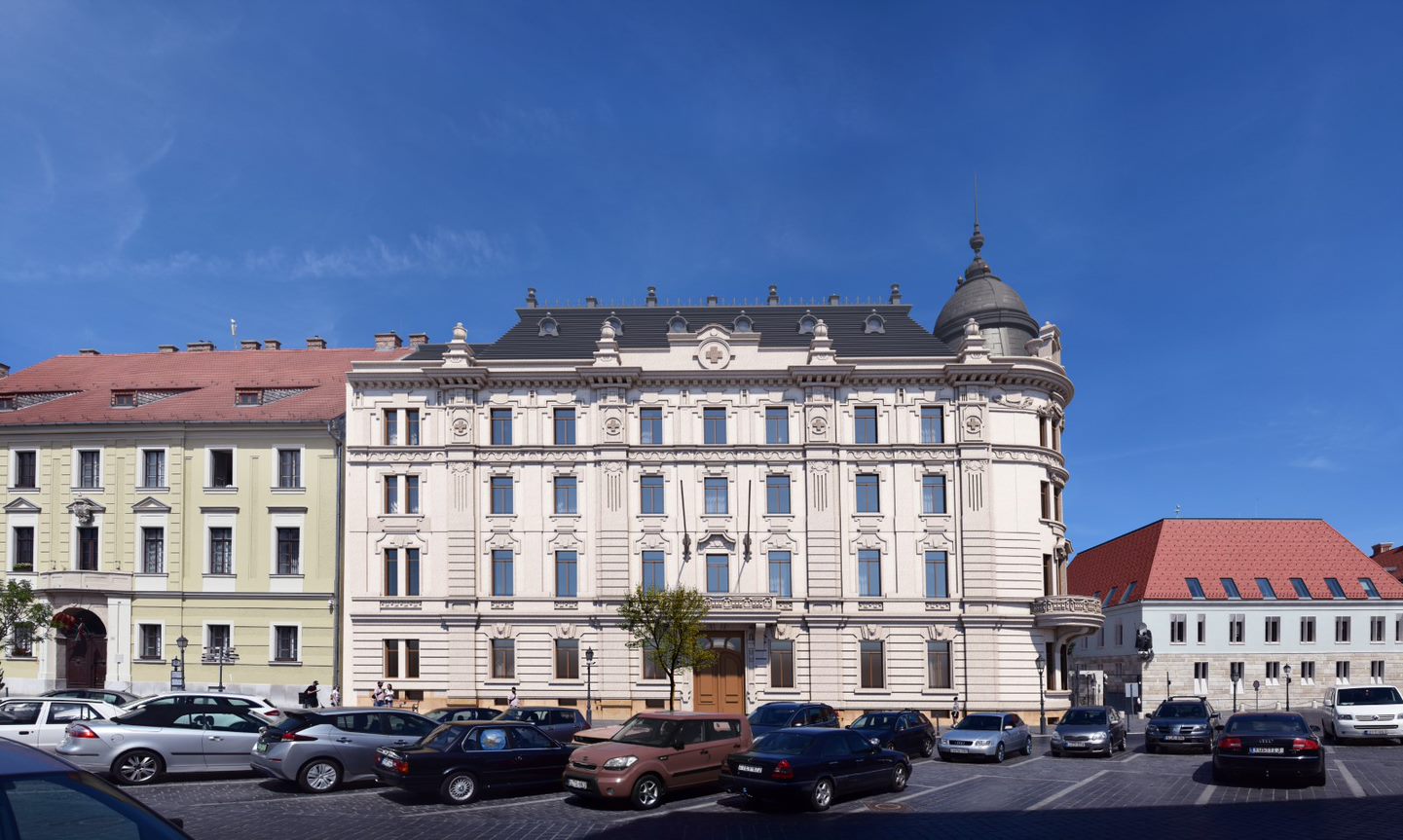
Ornaments will be rebuilt but, a new solution will be used to light the attic rooms instead of mansard windows (Visual: Várkapitányság)
As the building will house offices in the future, similarly to its original function, most of the internal space will be taken by working areas. The not particularly large inner courtyard of the building will be roofed over at the third floor to allow for its use as an atrium, said Bence Bodrogi.
Due to the archaeological importance of the area, no underground garage will be built under the building. Drivers will be able to park in the new, Castle Garage under construction on Palota út nearby.
Where archbishops lived
The well-situated plot has historical significance. During the rule of King Matthias, the corner house here was first owned by János Beckensloer Archbishop of Esztergom, and then by the provost of Transylvania, Péter Váradi (a confidant of the king), who later became the Archbishop of Kalocsa. Then it was acquired by the Hungarian cardinal-archbishop Tamás Bakócz, the Hungarian that came closest to becoming pope. The Ottomans left only the walls of the archbishops’ house, and buildings constructed later were demolished in 1900, when the Palace of the Red Cross Society was built.
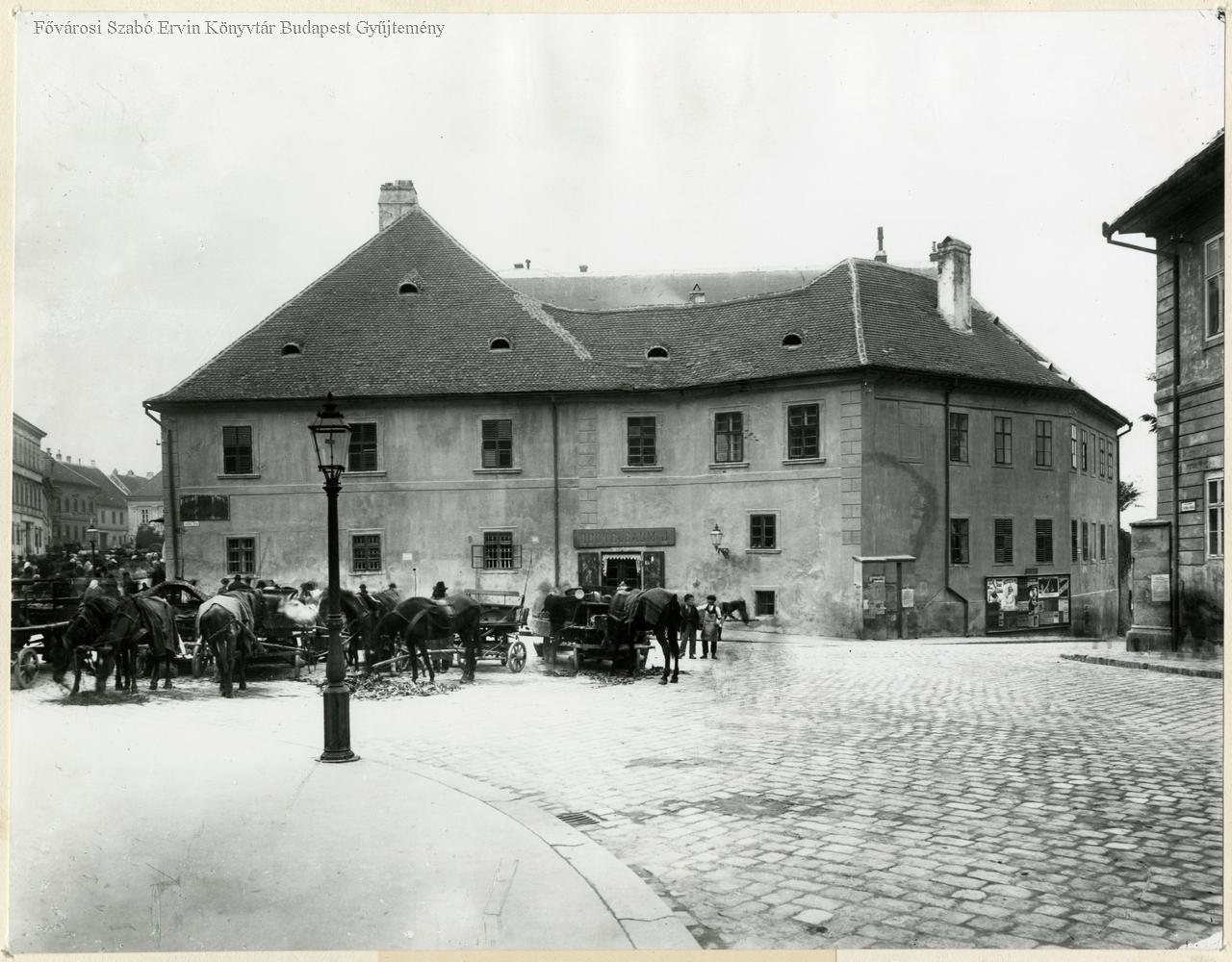 Three houses on the plot were demolished, during the construction of the palace, including this corner house (Photo: Fővárosi Szabó Ervin Könyvtár / Budapest Collection)
Three houses on the plot were demolished, during the construction of the palace, including this corner house (Photo: Fővárosi Szabó Ervin Könyvtár / Budapest Collection)
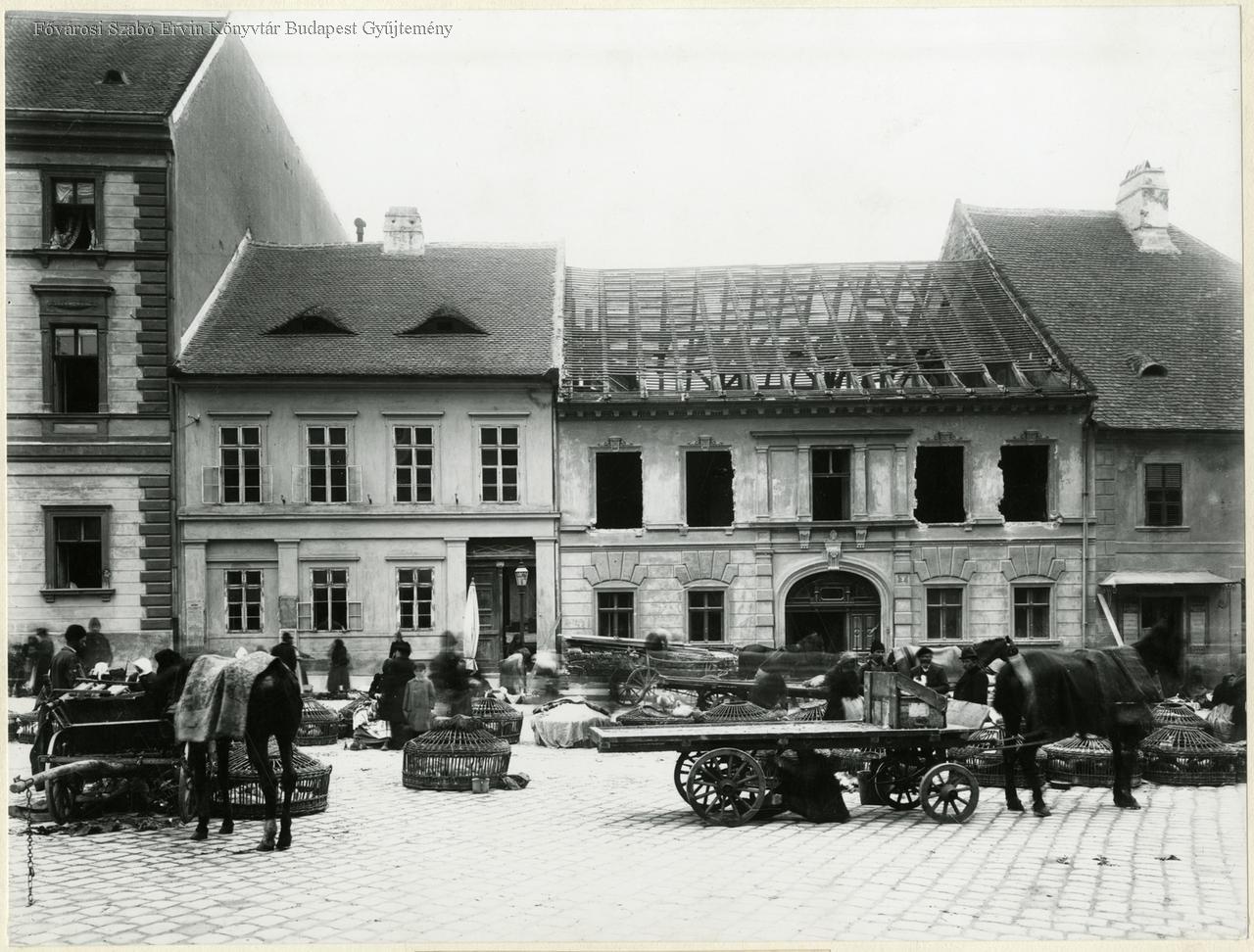 Two smaller houses, both demolished in 1900, stood between the corner house on the plot and the Batthyány Palace (the taller building to the left) (Photo: Fővárosi Szabó Ervin Könyvtár / Budapest Collection)
Two smaller houses, both demolished in 1900, stood between the corner house on the plot and the Batthyány Palace (the taller building to the left) (Photo: Fővárosi Szabó Ervin Könyvtár / Budapest Collection)
Since the war and the demolition of the building, the plot has been a scar on the cityscape for the past 70 years. By the ’50s, the debris-filled plot of the building, which had been demolished to the basement level, became the property of the United States. However, it served no function and stood unused. After the fall of socialism – again under Hungarian ownership – the plot housed a flea market unworthy of the World Heritage site operated by the Buda Castle local council.
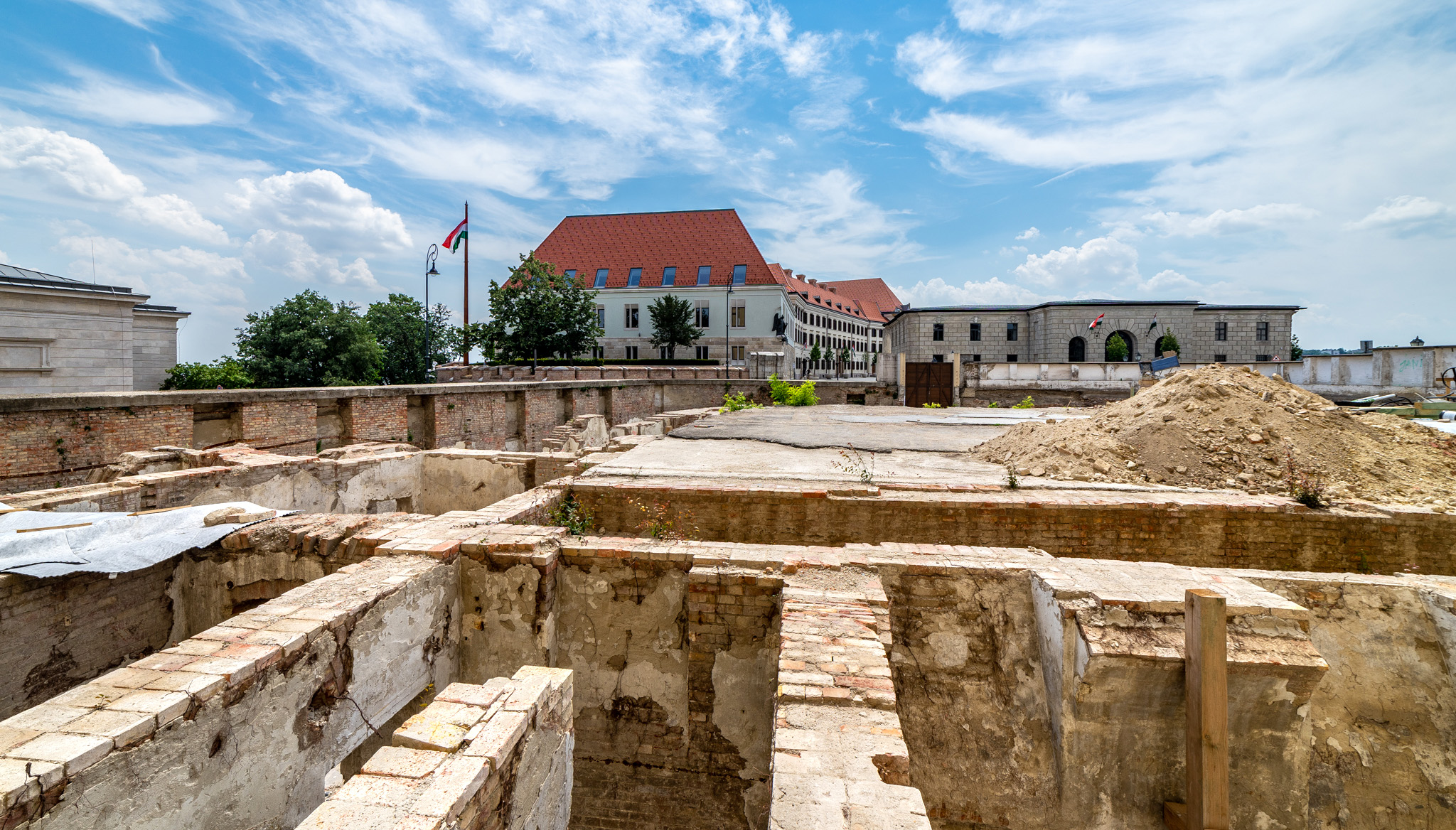
The cellar of the former building during excavations last year (Photo: Both Balázs/pestbuda.hu)
Construction will begin this year and end in 2022. The project will see the plot reborn as a worthy memory of Hauszmann’s oeuvre.









Hozzászólások
Log in or register to comment!
Login Registration